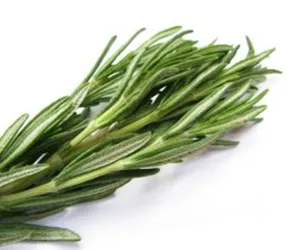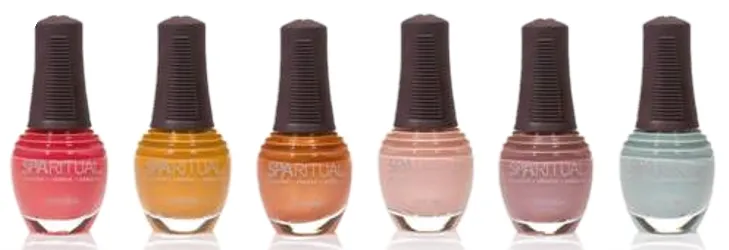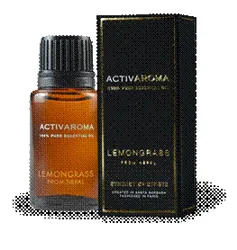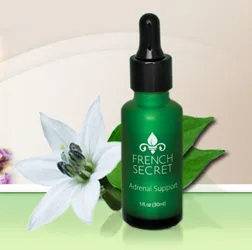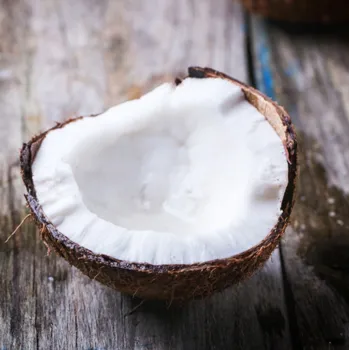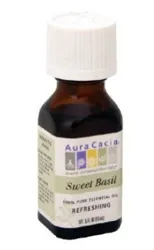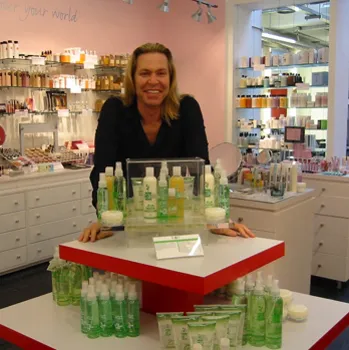
Essential Oils Around Since Time Of Pharaohs
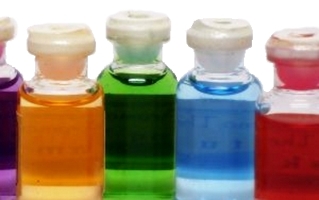 Essential Oils (EO) are key components used by many consumers who make their own hair and beauty home recipes with a variety of carrier oils or butters.
Essential Oils (EO) are key components used by many consumers who make their own hair and beauty home recipes with a variety of carrier oils or butters.
Essential Oils have been around since the time of the Pharaohs. Essential oils of flowers and plants have been used to promote beauty and general well being.
The Power Of Scents
Latest scientific research has confirmed this ancient knowledge revealing the amazing power of scents to to influence our moods and emotions. Studies have shown that some scents can help create relaxation while others can assist with sleep and a variety of other goals.
I personally dab lavender essential oil onto my wrists every night to help me fall asleep. It works like a charm. I also use peppermint EO when I need a lift or rosemary EO to help my scalp. Ylang Ylang is another favorite of mine for feeling relaxed and refreshed.
Aromatherapy
The study of essential oils and their aromas is considered to be a form of alternative medicine. Aromathery utilizes volatile plant materials, known as essential oils, and other aromatic compounds for the purpose of altering a person's mood, cognitive function or health.
It's important to note that the effectiveness of aromatherapy is yet to be scientifically proven. However there is significant evidence which exists and points to the therapeutic potential of essential oils.
Some essential oils have demonstrated notable anti-microbial effects. An example would be tea tree oil which has been proven to assist with the eradication of athletes foot and similar conditions. The evidence base for the efficacy of aromatherapy used to treat medical conditions remains poor due to a lack of methodologically rigorous studies.
History Of Aromatherapy
Aromatherapy origins in antiquity are linked to the use of infused aromatic oils, made by macerating dried plant material in fatty oil, heating and then filtering. Many such oils are described by Dioscorides, along with beliefs of the time regarding their healing properties, in his De Materia Medica, written in the first century.
Distilled essential oils have been employed as medicines since the invention of distillation in the eleventh century, when Avicenna isolated essential oils using steam distillation.
The concept of aromatherapy was first mooted by a small number of European scientists and doctors, in about 1907.
In 1937, the word first appeared in print in a French book on the subject: Aromathérapie: Les Huiles Essentielles, Hormones Végétales by René-Maurice Gattefossé, a chemist. An English version was published in 1993.
In 1910, Gattefossé burned a hand very badly in a laboratory explosion. The hand developed gas gangrene, which he successfully, and intentionally, treated with lavender oil.
A French surgeon, Jean Valnet, pioneered the medicinal uses of essential oils, which he used as antiseptics in the treatment of wounded soldiers during World War II.
Modes of application
The current modes of application of essential oils in aromatherapy include:
Aerial diffusion: for environmental fragrancing or aerial disinfection
Topical applications: for hair, skin and beauty treatments along with general massage, baths, compresses and therapeutic skin care.
Materials
Some of the materials employed include:
Essential oils: Fragrant oils extracted from plants chiefly through steam distillation (e.g. eucalyptus oil) or expression (grapefruit oil). However, the term is also occasionally used to describe fragrant oils extracted from plant material by any solvent extraction.
Absolutes: Fragrant oils extracted primarily from flowers or delicate plant tissues through solvent or super critical fluid extraction (e.g. rose absolute). The term is also used to describe oils extracted from fragrant butters, concretes, and enfleurage pommades using ethanol.
Phytoncides: Various volatile organic compounds from plants that kill microbes[citation needed]. Many terpene-based fragrant oils and sulfuric compounds from plants in the genus "Allium" are phytoncides, though the latter are likely less commonly used in aromatherapy due to their disagreeable odors.
Herbal distillates or hydrosols: The aqueous by-products of the distillation process (e.g. rosewater). There are many herbs that make herbal distillates and they have culinary uses, medicinal uses and skin care uses. Common herbal distillates are rose, lemon balm and chamomile.
Infusions: Aqueous extracts of various plant material (e.g. infusion of chamomile)
Vaporizer (Volatized) Raw Herbs: Typically higher oil content plant based materials dried, crushed, and heated to extract and inhale the aromatic oil vapors in a direct inhalation modality
Theory Of Aromatherapy
Aromatherapy is the treatment or prevention of disease by use of essential oils.
Two basic mechanisms are offered to explain the purported effects. One is the influence of aroma on the brain, especially the limbic system through the olfactory system.
The other is the direct pharmacological effects of the essential oils. While precise knowledge of the synergy between the body and aromatic oils is often claimed by aromatherapists, the efficacy of aromatherapy remains unproven. However, some preliminary clinical studies of aromatherapy in combination with other techniques show positive effects.
In the English-speaking world, practitioners tend to emphasize the use of oils in massage[citation needed]. Aromatherapy tends to be regarded as a complementary modality at best and a pseudoscientific fraud at worst.
Choice and purchase
Oils with standardized content of components (marked FCC, for Food Chemical Codex) have to contain a specified amount of certain aroma chemicals that normally occur in the oil[citation needed]. But there is no law that the chemicals cannot be added in synthetic form in order to meet the criteria established by the FCC for that oil.
For instance, lemongrass essential oil has to contain 75% aldehyde to meet the FCC profile for that oil, but that aldehyde can come from a chemical refinery instead of from lemongrass.
To say that FCC oils are "food grade" then makes them seem natural when in fact they are not necessarily so.
Undiluted essential oils suitable for aromatherapy are termed therapeutic grade, but in countries where the industry is not regulated, therapeutic grade is based on industry consensus and is not a regulatory category[citation needed]. Some aromatherapists take advantage of this situation to make misleading claims about the origin and even content of the oils they use.
Likewise, claims that an oil's purity is vetted by mass spectrometry or gas chromatography have limited value, since all such testing can do is show that various chemicals occur in the oil. Many[which?] of the chemicals that occur naturally in essential oils are manufactured by the perfume industry and adulterate essential oils because they are cheaper. There is no way to distinguish between these synthetic additives and the naturally occurring chemicals.
The best instrument for determining whether an essential oil is adulterated is an educated nose. Many people[who?] can distinguish between natural and synthetic scents, but it takes experience.
Popular Use Of Aromatherapy And Essential Oils (EO)
Lemon oil is uplifting and anti-stress/anti-depressant. In a Japanese study, lemon essential oil in vapour form has been found to reduce stress in mice. Research at The Ohio State University indicates that Lemon oil aroma may enhance one's mood, and help with relaxation.
Thyme oil
Efficacy
Some benefits that have been linked to aromatherapy, such as relaxation and clarity of mind, may arise from the placebo effect rather than from any actual physiological effect.
The consensus among most medical professionals is that while some aromas have demonstrated effects on mood and relaxation and may have related benefits for patients, there is currently insufficient evidence to support the claims made for aromatherapy.
Scientific research on the cause and effects of aromatherapy is limited, although in vitro testing has revealed some antibacterial and antiviral effects.
There is no evidence of any long-term results from an aromatherapy massage other than the pleasure achieved from a pleasant-smelling massage. A few double blind studies in the field of clinical psychology relating to the treatment of severe dementia have been published. Essential oils have a demonstrated efficacy in dental mouthwash products.
Skeptical literature suggests that aromatherapy is based on the anecdotal evidence of its benefits rather than proof that aromatherapy can cure diseases. Scientists and medical professionals acknowledge that aromatherapy has limited scientific support, but critics argue that the claims of most aromatherapy practitioners go beyond the data, and/or that the studies are neither adequately controlled nor peer reviewed.
Some proponents[who?] of aromatherapy believe that the claimed effect of each type of oil is not caused by the chemicals in the oil interacting with the senses, but because the oil contains a distillation of the "life force" of the plant from which it is derived that will "balance the energies" of the body and promote healing or well-being by purging negative vibrations from the body's energy field.
Arguing that there is no scientific evidence that healing can be achieved, and that the claimed "energies" even exist, many skeptics reject this form of aromatherapy as pseudoscience or even quackery.
Safety concerns
In addition, there are potential safety concerns. Because essential oils are highly concentrated they can irritate the skin when used neat, which means undiluted.
Essential Oils (EO) are normally diluted with a carrier oil such as sweet almond, coconut or sesame oil or similar for topical application. Phototoxic reactions may occur with citrus peel oils such as lemon or lime.
Also, many essential oils have chemical components that are sensitisers (meaning that they will after a number of uses cause reactions on the skin, and more so in the rest of the body). Some of the chemical allergies could even be caused by pesticides, if the original plants are cultivated. Some oils can be toxic to some domestic animals, with cats being particularly prone.
Two common oils, lavender and tea tree, have been implicated in causing gynaecomastia, an abnormal breast tissue growth, in prepubescent boys, although the report which cites this potential issue is based on observations of only three boys (and so is not a scientific study), and two of those boys were significantly above average in weight for their age, thus already prone to gynaecomastia.
A child hormone specialist at the University of Cambridge claimed "... these oils can mimic estrogens" and "people should be a little bit careful about using these products."
As with any bioactive substance, an essential oil that may be safe for the general public could still pose hazards for pregnant and lactating women.
While some advocate the ingestion of essential oils for therapeutic purposes, licensed aromatherapy professionals do not recommend self prescription due the highly toxic nature of some essential oil.
Potential Toxic Natures Of Some Oils
Some very common oils like Eucalyptus are extremely toxic when taken internally.
Doses as low as one teaspoon has been reported to cause clinically significant symptoms and severe poisoning can occur after ingestion of 4 to 5 ml.
A few reported cases of toxic reactions like liver damage and seizures have occurred after ingestion of sage, hyssop, thuja, and cedar. Accidental ingestion may happen when oils are not kept out of reach of children.
Oils both ingested and applied to the skin can potentially have negative interaction with conventional medicine. For example, the topical use of methyl salicylate heavy oils like Sweet Birch and Wintergreen may cause hemorrhaging in users taking the anticoagulant Warfarin.
Adulterated oils may also pose problems depending on the type of substance used.
More Information
Please follow me on Twitter at: http://Twitter.com/HairBoutique. I look forward to meeting new people from all walks of Twitter and learning from their Tweets. Visit us at Hairboutique.com located at: http://www.HairBoutique.com, on Facebook, MySpace and YouTube.
Thank you for visiting us at The HairBoutique Blog and for leaving your comments. They are very much appreciated. We apologize in advance but must remove any direct advertisements or solicitations.
Social Media Network Information
Please follow us on Twitter at: https://Twitter.com/HairBoutique. I look forward to meeting new people from all walks of Twitter and learning from their Tweets.


